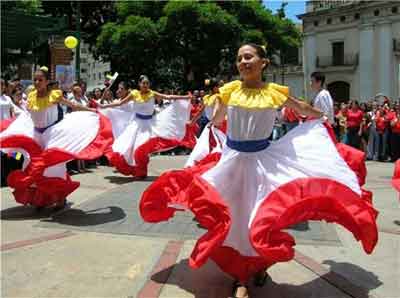 African Tradition is expressed through a variety of art forms, for example music, dance, art, sculpture and beadwork.
African Tradition is expressed through a variety of art forms, for example music, dance, art, sculpture and beadwork.These traditions are deeply ingrained in to the whole African culture.
Many African languages are “tone languages,” and therefore pitch level determines meaning.
Naturally, singing is essential to the African society since the melody and rhythm stick to the intonation from the song text. The songs in many cases are sung in call-and-response form.
In West Africa, a griot is really a praise singer or poet who possesses a repository of oral tradition passed on from one generation to another. They must be aware of traditional songs and should also be able to improvise songs about current events and chance incidents.
Oral tradition is essential in African culture, because it insures the passage of cultural practices in one generation to a different.
Listening is definitely an equally important skill, that has been perfected through the traditional oral practices. Numerous songs and dances happen to be transmitted by person to person.
Music is really a form of communication also it plays a practical role in African society. Songs accompany marriage, birth, rites of passage, hunting as well as political activities. Music is usually used in different African cultures to defend against evil spirits and also to pay respects to get affordable spirits, the dead and ancestors.
Even though musical styles and instruments change from region to region, there are several common types of musical expression. The most important instrument in African music may be the African drum. It expresses the atmosphere of the people and evokes emotion. The beat from the African drum may be the “heartbeat of the community” and it is rhythm is exactly what holds the dancers together.
Dance is a valuable part of the African culture. also it utilizes symbolic gestures, masks, costumes, body painting and props to speak. The dance movements could be simple or complex with intricate actions including fast rotation, ripples from the body and contraction and release. Dance can be used to express emotion, whether joyful or sorrowful which is not restricted to just the dancers. Often spectators is going to be encouraged to participate in.
The African masks which are used in dances have religious, ceremonial and functional origins. The artist who carves the mask will ceremonially purify himself and provide prayers to his ancestors for guidance before he begins the particular carving from the mask.
The African mask represents a spirit which is believed that the spirit possesses the dancer because they wear the mask. The chosen dancer adopts a trance-like state to be able to receive guidance and wisdom in the ancestors. The dancer will utter and moan the messages received along with a wise man, who accompanies the dancer will translate the content.
Although music and dance are incredibly important African traditions and therefore are very common types of communication, many African people go to town in other artistic representations as well.
The Zulu individuals are well known for his or her intricate beadwork. The color of each bead has a specific meaning. The beads happen to be used to carry messages referred to as “ucu,” a Zulu term loosely translated as “love letters”.
It's an African tradition for girls to send a boy a beaded bracelet of various colours. The boy will court her for some time and at the right time, he'll ask her this is of the beads.
Art and sculpture are prevalent in African culture., and also the most common themes depict a few, a woman and child, a male having a weapon or animal, or perhaps a “stranger.”
Couples are often freestanding figures of the identical size, representing the significance of “two as one.” A men and women couple in African art usually depicts strength and honour instead of love and intimacy, because it is uncommon for African women and men to publicly display their affection.
A parent and child couple can represent “mother earth” and her people or even the strong bond between mother and child.
A mans figure having a weapon or animal, represent honour to departed ancestors. African males are often honoured in warfare and there's a great focus on weaponry in African art, because it depicts survival and power.
Once the stranger is represented in African art, it always depicts someone from the foreign country or tribe that isn't welcomed.
No comments:
Post a Comment